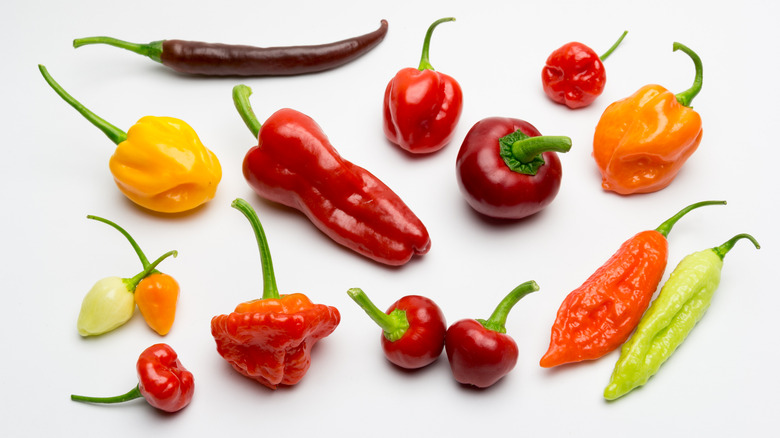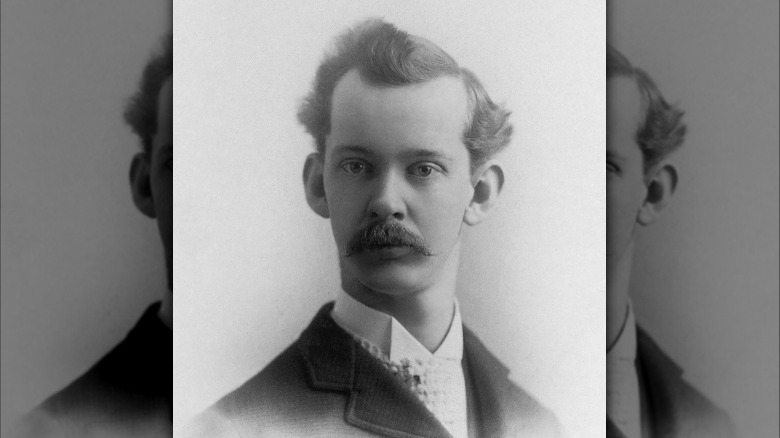The Inventor Of The Scoville Scale Was An Early 20th-Century Pharmacologist
When you think about the person who invented the Scoville scale, you might imagine a Guy Fieri-esque figure whose over-the-top persona matches his exclamations of pain as he tries a seriously spicy hot sauce or one of the world's hottest peppers. But he was actually a seemingly unassuming man born in 1865 named Wilbur Scoville.
Part of the untold truth of the Scoville scale is that he invented this tool not to encourage painful consumption, but to treat it. In 1912, Scoville was working as a pharmacologist for Parke-Davis, a pharmaceutical manufacturer based in the U.S. Parke-Davis was then the nation's largest drug company and happened to produce a pain-killing ointment known as Heet liniment. The main ingredient was capsaicin, the compound in peppers that triggers the burning sensation and — with high-enough consumption — can make you cry for mercy.
Parke-Davis wanted to get the amount of capsaicin just right, allowing Heet liniment to dull pain without producing any extra discomfort. Scoville set to work on a method for extracting the chemical compound in a reliable manner then measuring the result. The first was the organoleptic test, in which he used oil to dissolve fat-soluble capsaicin. Scoville then added sugar water to the mix, diluting it enough that he could give it to a group of five tasters. He added progressively more sugar until a pepper's heat was no longer detectable by testers. That point was used to mark a pepper's place on Scoville's second innovation: his eponymous Scoville scale.
Scoville's innovation has gone in a surprising direction
Today, the Scoville scale may be an eye-catching way to mark the heat of a pepper, but it's not the most useful way to measure capsaicin in a scientific lab. Part of the problem centers on human fallibility and fatigue. Simply put, tasters who are subjected to multiple rounds of any food, not just scorching pepper extracts, can become fatigued and lose the ability to accurately detect tastes. Instead, modern scientists use high-performance liquid chromatography (a process that isolates ingredients) to determine how much capsaicin is in something, to the tune of a more accurate parts per million.
But Wilbur Scoville still deserves quite a bit of credit. Besides being a renowned pharmacist who served as a respected pharmacy professor and wrote a long-standing textbook, he was also pretty darn accurate. Scientists today have found that taking liquid chromatography results and multiplying them by 16 will get you pretty dang close to a pepper's accepted rating on the Scoville scale (though there's a very remotely possible yet potentially deadly end of the Scoville scale that you'll likely want to avoid).
However, the ointment that kicked off the development of the Scoville scale turned out to be a bit of a dud. Despite the new tool, Parke-Davis couldn't figure out how to incorporate a more accurately-measured capsaicin into the product. A pain-relieving Heet cream is still available for purchase, but it now contains methyl salicylate as the active compound.

